#duat
Text

You know what? I love that Marc didn't immediately jump off the ship and run after Steven when he fell. I love that we know Marc walking into potentially being a sandstone statue forever was a conscious decision. I love that Marc saw what happened to Steven when he fell, and still chose to go. That he made that decision after Taweret's warnings. I love that it wasn't a split second panicked impulse.
So many of Marc's decisions in life were under pressure, stress, manipulation. But here, in this moment, he was peaceful. He had all the calm he could dream of in the field of reeds, and he chose to go after Steven. He made a decision by himself, for himself.
2K notes
·
View notes
Text

Osiris, from the tomb of King Horemheb
#Egypt#ancient Egypt#Osiris#Egyptian tomb#Egyptian#tomb#netcher#netcheru#deity#ancient history#ancient#underworld#duat#Horemheb#valley of the kings#kemetic#Kemet
93 notes
·
View notes
Text
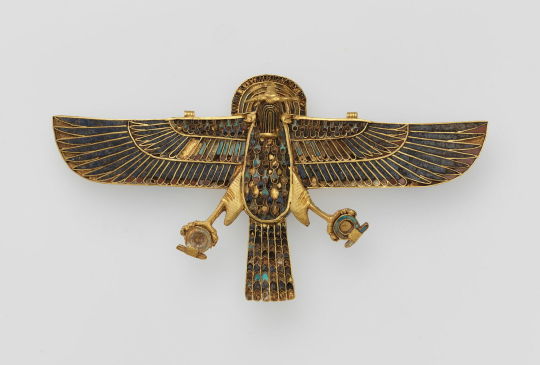


Ra in his night form, Ba of the Creator. Tomb of Ramesses II in Serapeum of Saqqara — Louvre Museum in Paris (E80).
74 notes
·
View notes
Text
Yes, there are 2 goldfishes. But have you noticed the boat in the sand?? it's Taweret's boat from the Duat!!

494 notes
·
View notes
Text


Brisk Harpy: a courier organization dedicated to helping colonies out West primarily in areas where the UCA/Chiral Network can't reach. Gene Dawkins took up work at Brisk Harpy following her departure from Middle Knot City.
DUAT: A team of 6 individuals recruited by an offbranch of the UCA to allegedly assist with research pertaining to BTs and Beaches. Rumor has it the 6 are embued with special abilities and powers that give them domain over entities...Of course, that's hearsay. There may also be a 7th member but nothing substantial evidence wise as come forward.
**my new Death Stranding fanfic isn't coming out for a while, but I felt like making logos for two organizations that'll be featured. If you've read Sky of Atoms, Brisk Harpy should be familiar. DUAT though, is something new 👀
#death stranding#death stranding fandom#death stranding fanfic#brisk harpy#DUAT#death stranding brisk harpy#death stranding DUAT#gene dawkins#death stranding oc#original character#the outline is coming along great for this story with Gene#I'm trying to also squeeze in some canon characters too#like heartman for example#and of course the rat bastard himself#higgs monaghan#not expecting hype from anybody im hyping myself up to write this all#its gonna be the beez kneez
15 notes
·
View notes
Text

Title: Osiris who rules in the great Duat
Artist: 0ne0nlylarry larry Springfield
https://www.deviantart.com/0ne0nlylarry/art/Osiris-who-rules-in-the-great-Duat-918901137
#rmaalbc #artist #0ne0nlylarry
#rmaalbc#osiris#rules#great#duat#0ne0nlylarry#larry#springfield#black#artist#blackblr#black on tumblr#kemet#egypt
32 notes
·
View notes
Text
Poimandres Dialogue & PGM XVIIb. 1-23
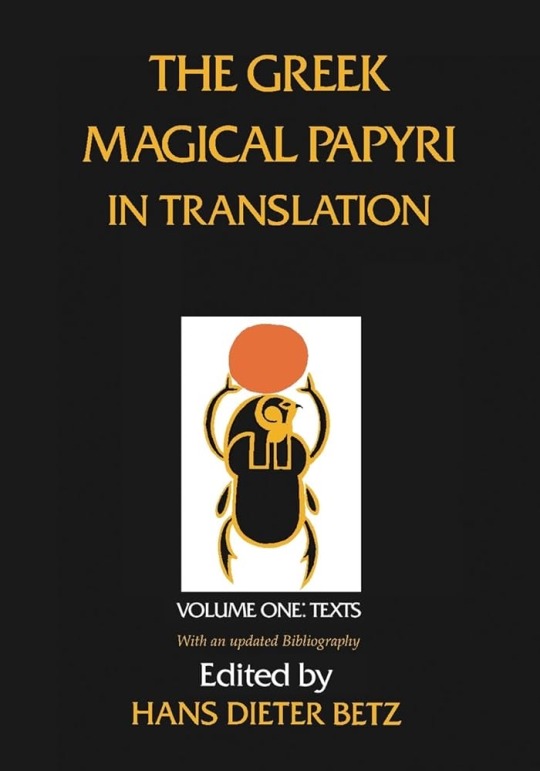
Interesting parallel here, as Hermes Trismégistōs is being taught by Poimandres the elements and the “unreasoning” creatures that spring forth from said elements and in PGM XVIIb which appears to be a simple theurgic hymn to Hermes. In line 15 it states: “You lord it o’er the Elements: fire, air, water and earth.”
Here is the whole hymn as follows:
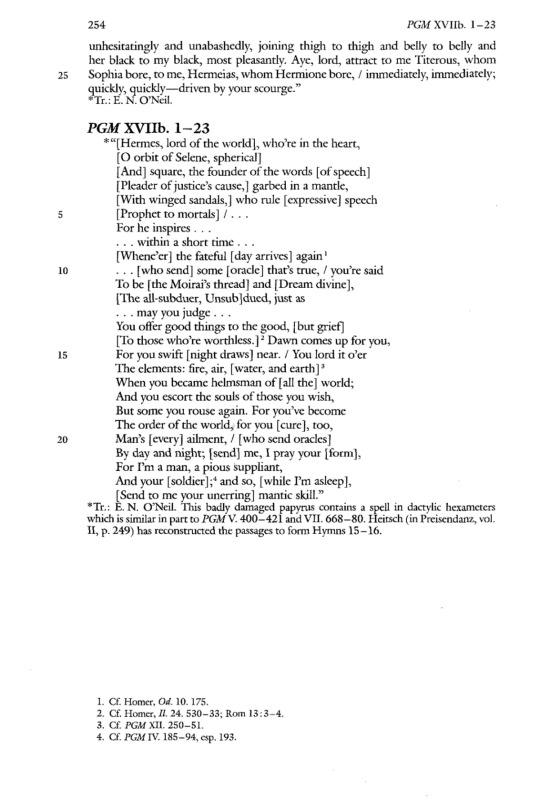
This hymn just seems very similar to CH I. 5 and 11. In paragraph 5 of the Corpus Hermeticum, Hermes Trismégistōs learns of “The fire that was nimble and piercing and active as well…” and the rest of elements that are “stirred to hear by the spiritual word (Logos) that moved upon them.” And in paragraph 11 he learns of the elements air, earth and water and the unreasoning creatures that spring forth from said elements.
What’s interesting is my equation of Hermes as the spiritual word. The divine Logos. Is this Hermes Trismégistōs being taught by Poimandres the nature of Hermes, the Olympian, as Logos and his role in Hermetic creation? Seems like an argument could be made for this. What’s tricky though is who Hermes Trismégistōs is. Cause at times, to me at least, He is Hermes the Olympian and Thoth syncretized, other times he is a divine prophet, but a man no less.

Thoth is also equated in my head canon as the divine Logos, but the name of which god is the Logos of the Poimandres dialogue is not what is important I think. For in both mythologies: Hermes the Olympian is a brandisher of speech, gifting said speech to we mortals and to Pandora, and Thoth is the creator of the hieroglyphs, recorder of all names who enter the Du’at. So, they can both be the Logos, as described in the Poimandres dialogue, i.e. CH I.
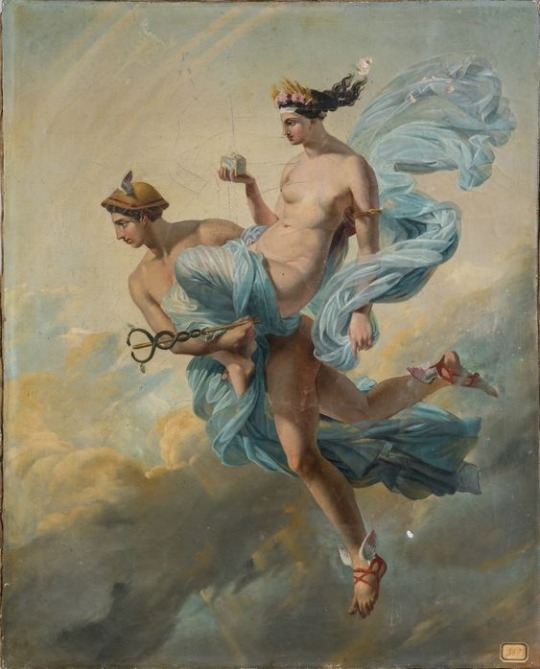
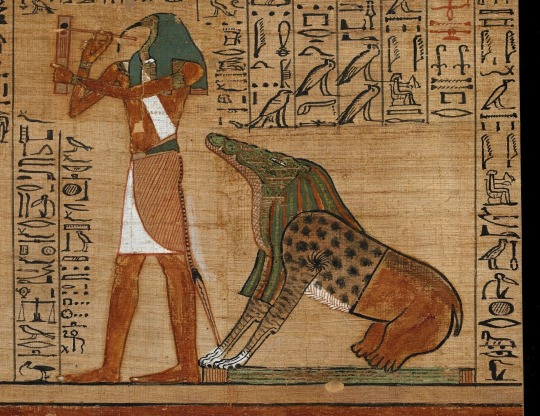
Not really sure where this is going, other than just making an interesting parallel to Hermetic “philosophy” and more practical Hermetic “magic/theurgy”. Anyways —Khaire Hermes!

#hermetic library#hermeticism#philosophy#hermes trismegistus#hermetica#occult#greek magical papyri#hermetic philosophy#hermes#thoth#duat#therugy
13 notes
·
View notes
Text
Anubis gotta put those zoomies to use! 🫀⚖️



#god anubis#anubis#anpu#kebechet#mythology#ancient egypt#egyptology#snakes#duat#comic#my comic#jackal#egypt#warcrimetime portfolio
62 notes
·
View notes
Text

Khepri depicted as a scarab with the Duat the Egyptian Afterlife, held above his head, standing on a sun disk with baboons on either side.
91 notes
·
View notes
Text
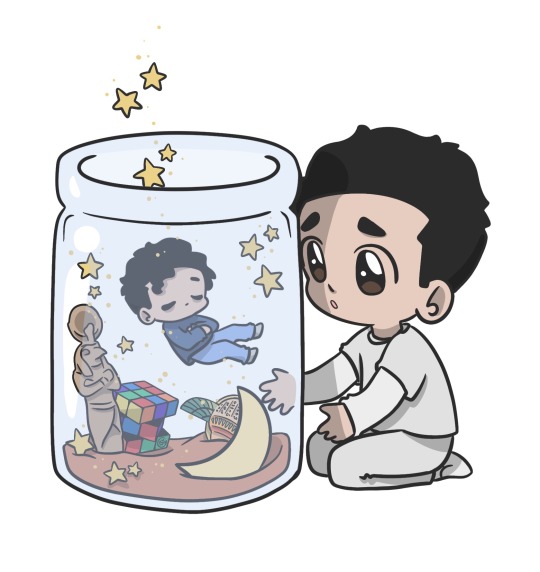
I love them, your honor. 🌙
156 notes
·
View notes
Text

Recreation of a embalming scene of Anubis who guides the souls of the dead to the Duat, the afterlife, and eventually back to Sirius.
⛰⛰⛰🦊🦊🦊
#anime#ufos#aliens#scifi#extraterrestrials#animation#ancient aliens#comic books#fantasy#manga#anubis#egypt#egyptology#duat
7 notes
·
View notes
Note
I know this is a dumb question, but would you mind explaining the Kemetic afterlife in layman terms? I still can't wrap my head around some of the concepts.
tl;dr: it depends on the era
pre-dynastic egyptians, the Buto Burials, show that there was still heavy focus on cattle, and ppl were buried wrapped in cow skins with a small amount of stuff. likely, to get them through the afterlife? to get them to wherever they needed to go. texts are sparse.
earliest dynastic eras of AE mostly focused on the king, a lot of egyptologists believe that the afterlife was only available to the king in the earliest eras of AE history, but i personally don't feel like we have enough information to really say that.
either way, you crawled up into the sky with teh gods. you are both saved by the gods and the enemy of the gods. you consume the gods and become a god. there's a lot of ladders.
the pyramid texts of the OK become the basis of coffin texts in the MK. tbh, a lot of the texts are really similar. i've flipped through both the PT and CT, and they are very similar. you still go claw and caojle your way to the gods until you become an akh.
later periods, the afterlife moved more into the ground, into caverns. BotD materials p much focus on this aspect of the afterlife, and by the latest periods, you get the Book of Earth which is... as the name suggests, funerary texts about the afterlife in the ground.
egyptologists will tell you that they prepared tombs and texts to get them through the afterlife, and that this persists throughout all of AE history. and that these things seemed necessary to be able to even become an akh, but i've personally never been a big fan of assuming that you need a bunch of physical shit to get to the Hall of Two Truths. it just doesn't sit right iwth my that commoners were somehow barred from an afterlife because they didn't have money. instead, i prefer to think that rich ppl needed to jump through hoops because rich ppl are awful at adhering to ma'at :)
anyways, after you die you're nothing but a shadow, a really weak spirit that isn't fully Established. your goal as a spirit is to become Established, to become an Akh. a "shining one." akh are represented by stars, because in the OK, you went into the sky when you died and became a star (which, again, goes against the idea that only the king could get there omg).
in order to become an akh, you gotta make it to the Hall of Two Truths. in order to get there, you need all that shit you were buried with (supposedly). you end up going through a journey of the duat, you meet different guardians and are supposed to know the right things to say to get through the gates and make it to the Hall. traditionally it's believed that the path to the Hall is treacherous, because the Duat has a bunch of things living in it that would love to eat you, but my personal experiences of the Duat haven't bore that out (esp in the modern era, idk maybe it was all spooky n shit in the past).
but also, i'm really not down with suggesting that poor ppl just get picked off because they didn't have money.
Naydler posits a different theory, that the process of going through the Duat and meeting all of the guardians and such helps you to become prepared for the Hall, and you only reach the Hall if you're actually ready to become an akh.
The most well-known part of the Hall is the negative confessions (sometimes called the 42 truths of ma'at, which is not a good name for them) and the weighing of the heart.
the confessions are really meant to be heka that fully transform you into someone who will exist within the structures of the Field of Reeds (sometimes called... aaru). by reciting them, you become the person the heka says you are. if you're not an absolute shit person, the heka should be enough (imo) to get you through the process.
after you say the heka, your heart is weighed and if you're "good enough" O welcomes you as an Akh into the field of reeds. from there, you can sorta.... do all sorts of things. but basically, after you become an akh, all of your physical trappings are no longer necessary to sustain you. you're able to come and go btwn the Duat and here, and you're able to partake of the offerings the gods receive each day (lol).
you are established there now, so you don't need to be fully established here. that's why the most dangerous time for a dead person is right after they die up until they pass through the Hall. this likely informs why later kings were not too concerned with robbing old tombs to refill their coffers. similarly, it mirrors the way that the AE ppl seemed to view akhu veneration. you would focus on specific ppl who are within a generation or so fo yourself, and then anyone who is beyond that point tended to get moved into a collective "past ancestors". the egyptians may have done this because after a point, you don't really necessarily /need/ the direct assistance of your remaining kin, because you are now fully established in teh duat.
i could include here what happens if you don't pass the weighing of the heart, but i'm gonna be real with each and every one of you: most of yall don't have shit to worry about. whatever trivial mistakes you're making in life are not what gets you fed to ammit. i'd say to not trouble yourself with that and just focus on being the best you you can be. care about others around you, care about yourself, don't be an exploitative shitbag, and you'll be fine.
idk, hopefully that helped.
40 notes
·
View notes
Text

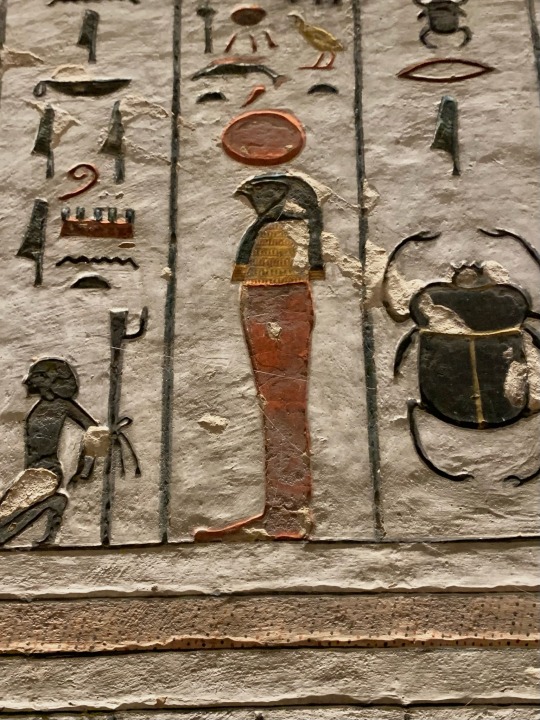
Gods gods gods
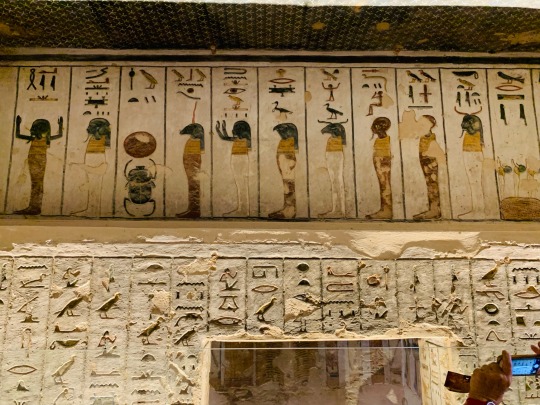
#Egypt#egyptology#Egyptian#ancient egypt#ancient egyptian#Kemet#Kemetic#Kemeticism#egyptian gods#valley of the kings#duat#Luxor
19 notes
·
View notes
Photo

through the field of reeds ~
#Ancient Egypt#Ancient Egyptian#ancient egyptian mythology#ancient egyptian art#kemetic#kemetic art#ba#duat#ancient egyptian afterlife#illustration#my art#digital illustration
15 notes
·
View notes
Text
Here’s some fun facts about genshin impact that i haven’t seen a lot of people talk about
Venti’s name probably came about from the latin word for wind, as well as the roman name of the personified wind spirits in the Homeric poems, also the word Anemo likely came from the Greek name for wind spirits, Anemoi. source
Most people know that Cyno is meant to represent Anubis, but the bird-headed statues around the desert are probably based of of Thoth, the Egyptian god of knowledge, who was usually depicted with the head of an ibis bird. source
In the desert there’s a place called Duat Hall, which might reference the Duat in Egyptian mythology which has many levels, and is where the land of the dead is.
This is all i have for now, but if you know of something, or just want to add on feel free!
#genshin impact#Genshin#fun facts#venti#cyno#anubis#duat#egyptian mythology#greek mythology#roman mythology#mythology#nerd stuff#thoth
16 notes
·
View notes
Photo

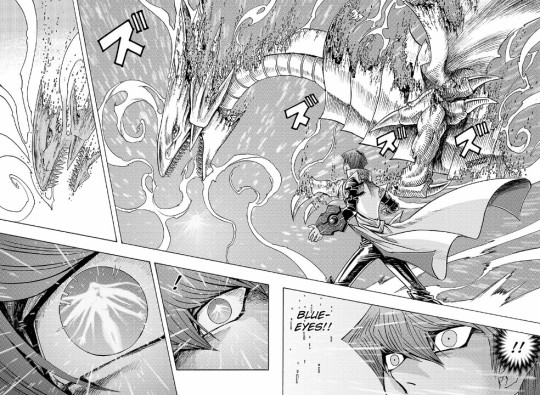
When I saw Kisara’s silhouette shown in Kaiba’s eye in the second picture, a thought came to my mind: Kisara is where Atem is, meaning Duat, the world of the dead. And for the dead to be there, according to @kaleidraws’s post, one need all their parts — Ka (essence), Ba (personality), Sheut (shadow), Jb (heart), and Ren (name) — and a priest doing all the necessary spells and rituals to receive judgement from Anubis and, if determined a good person, to spend eternity happily in the afterlife. In other words, for Kisara to still be a spirit even after around 3000 years, Priest Seto must have fufilled all the requirements to give her a proper burial. Manga!Priest Seto is undeniably more twisted than his anime counterpart, but I find it beautiful how he ensured that Kisara would have a comfortable afterlife.
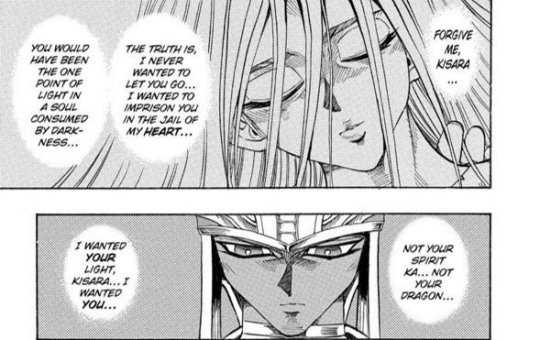
(If Takahashi had had more time, he would have given us the relationship worthy of those lines.)
There’s also a certain tragedy to it. Because Priest Seto had to ensure Atem would get the eternal rest he deserved, he probably died without giving himself a proper burial so that he would reincarnate (which can be said the same for Isis and Shimon/Siamun). And knowing Kaiba’s refusal to acknowledge the connection between him and his past Egyptian life, I doubt he would follow the procedure of an Egyptain burial. This means he and Kisara will never be together and are only so as Duelist and Monster / guardian spirit.
#yugioh#yugioh duel monsters#yugioh dm#millenium world arc#kisara#yugioh kisara#priest seto#seto kaiba#blue eyes white dragon#BEWD#mizushipping#blueshipping#setokisa#ancient egypt#ancient egyptian culture#duat#afterlife#egyptian afterlife#kaleidraws#star-crossed lovers#mine
144 notes
·
View notes